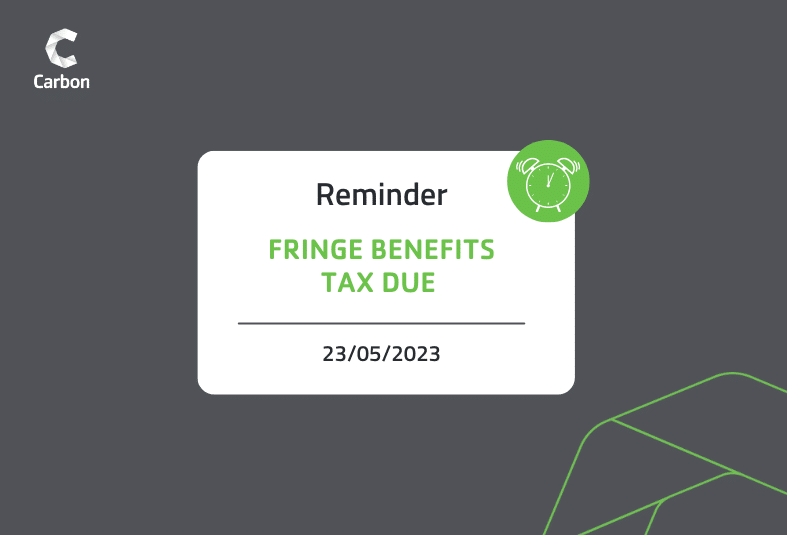When discussing taxes, it’s easy to forget about Fringe Benefits Tax (FBT). Yet if you’re like many of our business clients, you’re probably asking yourself “what constitutes a fringe benefit and how do I stay compliant while still rewarding my employees?” To answer that question let’s look at FBT in more detail.
Table of Contents
What is Fringe Benefits Tax (FBT)?
Fringe Benefits Tax (FBT) is the tax employers pay on certain benefits they provide to their employees. Fringe benefits typically include cars, entertainment, expenses and housing, among other things. The value of these benefits is usually included as part of the employee’s salary or wages package and then taxed at their marginal rate. However, if you provide these benefits directly then as the employer, you must pay for FBT on them. For example, if you provide a car to your sales executive for personal and business use, you must pay FBT on the value of that car at the end of the financial year. Another example would be paying for a family holiday to reward your top-performing employee. You must report and pay FBT on the value of that holiday as part of your FBT return.
FBT guide for employers in Australia
Determining what constitutes a fringe benefit can be tricky. Fortunately, the ATO website has an extensive guide for employers outlining the types of benefits subject to FBT and how to calculate the tax correctly.
How do I report FBT?
Reporting FBT starts with good record-keeping. Employers must keep accurate records of all fringe benefits provided to employees including the amount and date of each benefit. Similarly, employees must keep comprehensive records of any benefits they receive from their employer including the amounts and dates. Typically employee records include declarations, invoices and receipts, bills of sale, lease documents, travel diaries and copies of logbooks and odometer readings.
Only after collecting all the information necessary for FBT reporting can you calculate FBT. The exact calculation depends on the type of fringe benefit provided and whether it is taxable or exempt from FBT. Generally FBT is calculated by taking the taxable value of the benefit and multiplying it by the FBT rate, which is currently 47 per cent.
FBT deadline in Australia
After calculating FBT, employers must lodge an FBT return with the Australian Taxation Office (ATO) each year – electronically or by post. That said the deadlines vary slightly according to the lodgement process.
- If you prepare your FBT return in-house, you must lodge and pay any liability you owe by May 23.
- Employers lodging an FBT return via an accountant must appoint the accountant by May 21. Accountants and tax agents have until June 27 to lodge returns electronically or May 23 if they lodge by paper.
As an employer, you must provide employees with an FBT statement no later than seven days after lodging their FBT return. This statement will outline the FBT paid on employee benefits and must be provided to employees before they can lodge their individual income tax return.
FBT reporting is essential because it ensures that businesses comply with tax obligations and provide employees with accurate records of fringe benefits. With careful record keeping and FBT calculations, employers can ensure that FBT is reported and paid correctly.
What happens if I miss the FBT deadline?
Don’t be caught out by the FBT deadline. May 21 is fast approaching. Should you miss the payment deadline, the ATO may issue an additional penalty for each month that fringe benefits remain unpaid up to a maximum amount equal to 47 per cent of the fringe benefits provided for tax purposes. In extreme cases, where fringe benefits remain unpaid for more than six months beyond the due date, the ATO may issue a Notice of Intent indicating their intention to launch prosecution proceedings against a business and its directors/owners. As such, employers must understand their FBT obligations and make payments on time to avoid incurring additional penalties or other legal action from the ATO.
With that being said, the ATO also realises there are situations where extenuating circumstances apply. So if you need an extension, call the ATO directly on 13 28 66 and ask for an extension. But make the call well before the due date (May 21).
Difficulty paying FBT
If you believe you may have difficulty paying your FBT liability on time, contact the ATO as soon as possible. The ATO may be able to provide an extension for payment or arrange an alternative payment schedule, such as a periodic payment plan. Speak to your accountant or call the ATO direct on 13 11 42.
How to stay compliant with FBT?
The key to staying compliant with FBT is understanding the rules and regulations that govern how fringe benefits tax works. As mentioned earlier, employers must report any fringe benefit payments made in their annual income tax return along with details of the type of benefit provided and its value for tax purposes. You should also keep detailed records of all fringe benefit payments made throughout the year so that you can accurately report them when filing your taxes. It’s also important to note that different types of businesses may be subject to additional rules regarding FBT; therefore, consult an experienced accountant to ensure your business stays compliant with all applicable laws and regulations.
Navigation FBT and employee rewards
So many of our business clients are in the same boat regarding the successful hiring and retaining of staff. But their desire to reward valuable employees is often dashed by seemingly tricky fringe benefits tax rules. With guidance, you can make everyone happy without breaking the bank or running afoul of FBT regulations. Here are a few ideas to consider.
Employee rewards that won’t break the bank
- One way to reward employees is through non-cash rewards such as gift cards or vouchers which do not have a cash value and therefore do not need to be reported for taxation purposes.
- Additionally instead of providing expensive perks such as cars or travel expenses, you can opt for more affordable options such as team lunches or movie tickets. This still shows appreciation while staying within budget constraints.
- Flexible working arrangements such as telecommuting or job sharing can also help boost morale without incurring additional expenses associated with fringe benefits taxes.
Have more questions about FBT?
Staying compliant with FBT doesn’t mean you have to deprive your employees of receiving rewards for their hard work. There are plenty of creative ways to show appreciation without breaking the bank. Understanding the rules and regulations governing fringe benefits taxes is key to avoiding hefty fines or penalties due to non-compliance. If ever you’re in doubt, consult an experienced accountant or tax agent before rewarding your employees.
And remember, get your FBT in on time. The deadline – May 23 – is fast approaching.
If you need further assistance with Fringe Benefits Tax or compliant ideas to reward your employees without breaking the bank, talk to any one of our experienced accountants and business advisors. They are here to help. Call on 1300 454 174 for an obligation-free consultation.






















